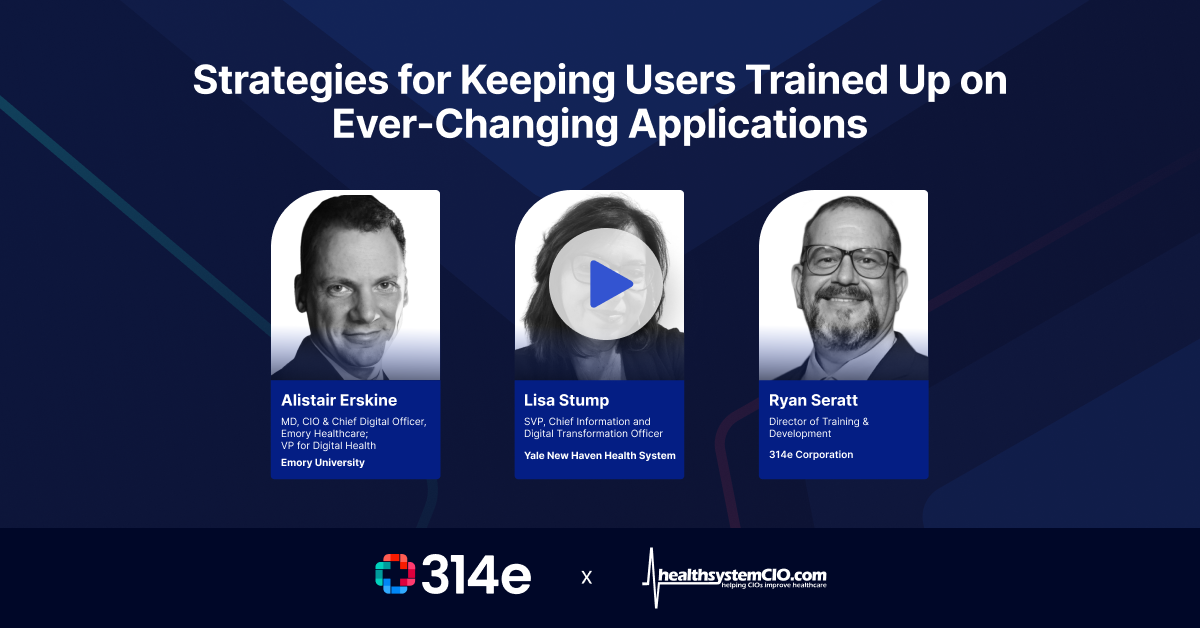Do This And Your Clinicians Won’t Skip EHR Upgrade Training
26 June, 2024 | 3 Min ReadHave you ever needed to learn something new but couldn’t find the time? Days passed, and despite your intentions, you never got around to it. Then, when the moment came to use that knowledge—whether for work, a personal project, or a sudden challenge—you had to learn it on the spot.
We’ve all been there.
Learning in the Flow of Work
Learning in the flow of work is about integrating learning opportunities seamlessly into daily tasks. It’s about providing just-in-time training that feels more like immediate assistance rather than a time-consuming session.
Now, imagine applying this concept to your clinicians. How often do they skip training sessions due to packed schedules?
Yet, they must adapt to changes in the EHR workflow and often find themselves in need of quick guidance. This is where learning in the flow of work can be transformative.
By providing quick, concise training materials right at the point of need, we can:
- Save Time: Clinicians can continue their tasks without significant interruption.
- Increase Retention: Learning that happens in context is more likely to stick.
- Boost Confidence: Immediate solutions reduce frustration and enhance confidence in handling new tools.
Practical Examples
Imagine a clinician encountering a new feature in the EHR system. Instead of halting their work to attend a training session, they could:
- Watch a short, focused video tutorial that guides them through the new feature.
- Follow step-by-step instructions that address their specific problem at that moment.
It’s akin to watching a quick recipe video on YouTube when trying a new dish – immediate, practical, and effective.
Real-Life Examples
Lisa Stump, SVP, Chief Information and Digital Transformation Officer, Yale New Haven Health System, recently shared some great insights.
We usually have comprehensive training for new hires, but what about ongoing learning?
To avoid overwhelming our clinicians, she shared that their organization set up regular check-ins at 30, 60, and 90 days after their initial training. This helps reinforce what they learned and introduces new features as they get comfortable with the basics.
For major system upgrades, they offer:
- Live Virtual Courses: Interactive sessions with real-time engagement
- Preregistered Podcasts: Accessible anytime for flexible learning
- Quick Tips and Tricks: Simple guides with screenshots for minor changes
They also incorporate training into existing meetings. For instance, if a change improves data capture for quality targets, they discuss it in relevant meetings.
This way, it’s not just an IT update but part of a bigger goal, making it more meaningful.
Benefits for Your Organization
Implementing this approach offers numerous advantages:
- Enhanced Productivity: Clinicians spend less time in formal training sessions and more time providing care.
- Improved Learning Outcomes: Learning in context ensures new skills and knowledge are better understood and retained.
- Increased Job Satisfaction: Quick, effective support reduces frustration, leading to happier, more confident clinicians.
- Better Patient Care: With clinicians more effectively trained and less stressed, patient care quality improves.
Next Steps
Embrace on-the-job learning and help your clinicians adapt seamlessly to new challenges. It’ll make their lives easier and improve your healthcare system’s efficiency and quality.
Curious about other ways to keep your clinicians trained on changes and up to speed on EHR updates?
Check this video ⬇️

Craving for More Insights?
Subscribe now and lead the way in EHR training and support.